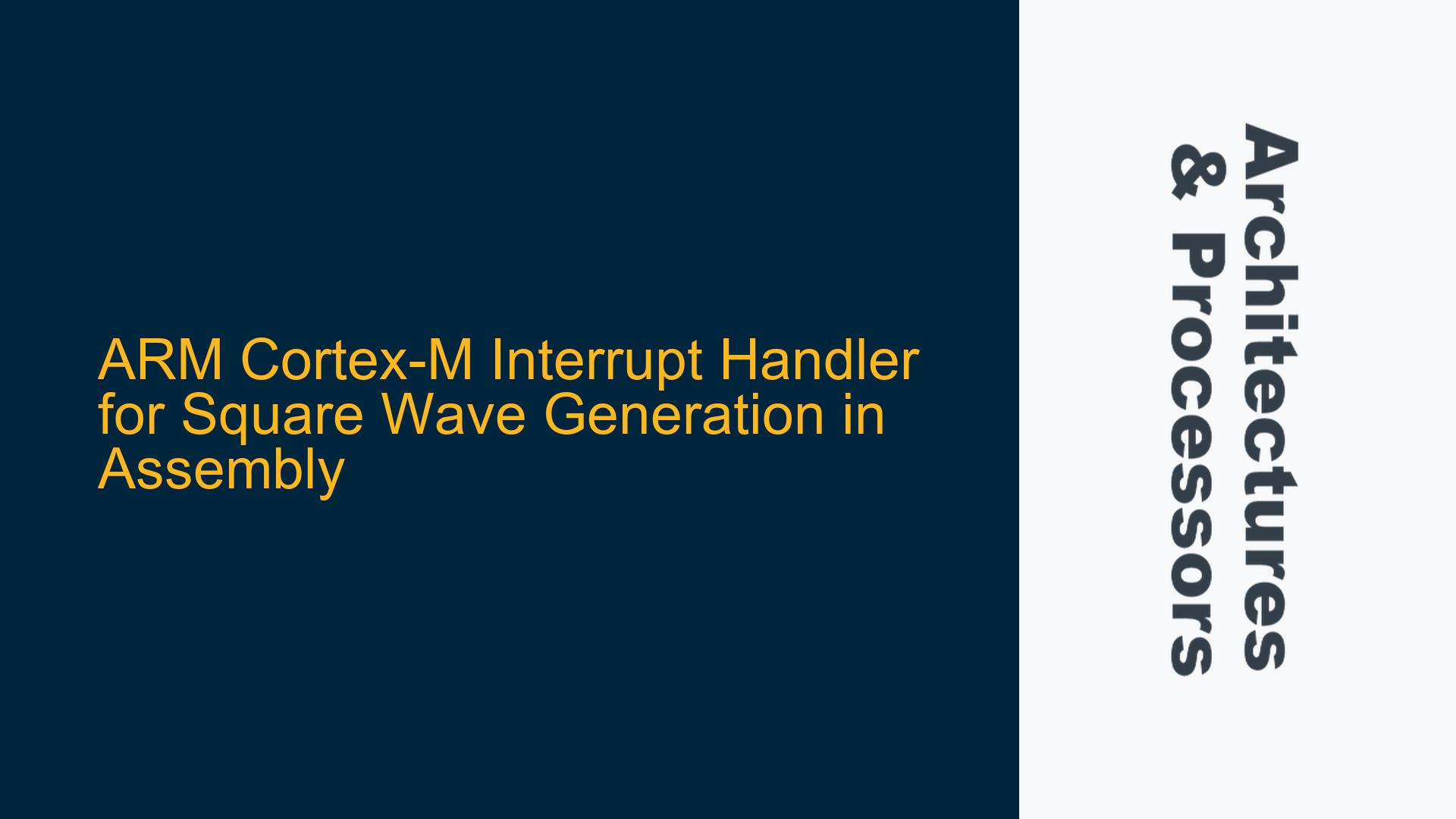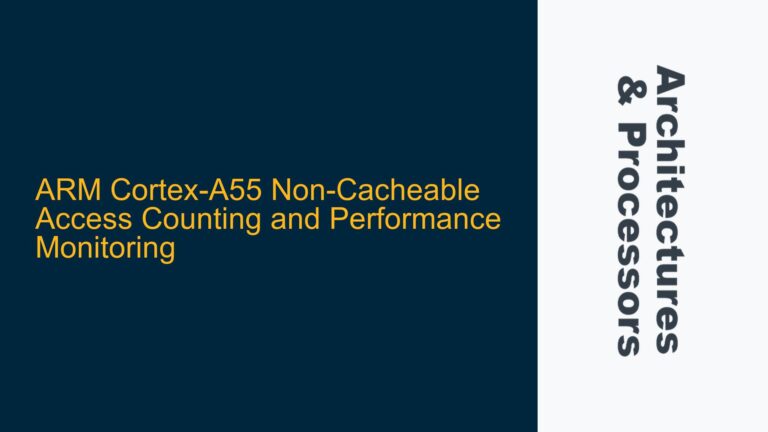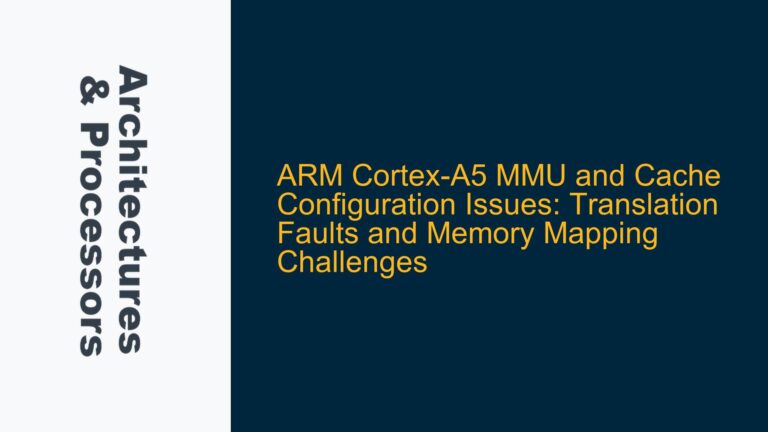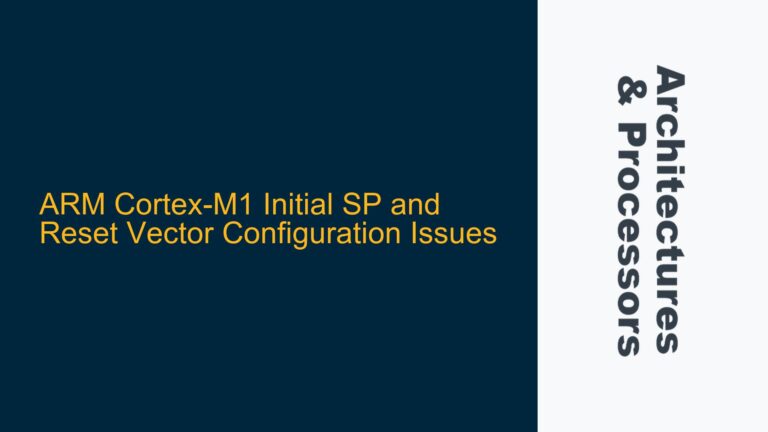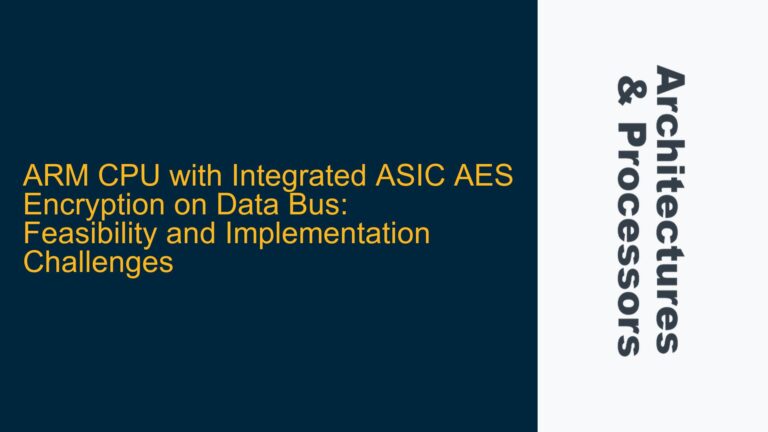ARM Cortex-M Interrupt Timing and Square Wave Generation Requirements
The core issue revolves around implementing an interrupt handler in assembly language for an ARM Cortex-M processor to generate a square wave output. The interrupt occurs at 500-microsecond intervals, and the handler must toggle a specific bit at the memory-mapped I/O location labeled GEN. The square wave is defined by setting the bit high for a specific number of 500-microsecond periods and then setting it low for the same number of periods before repeating the cycle. This task requires precise timing, efficient use of processor resources, and a deep understanding of ARM Cortex-M interrupt handling mechanisms.
The ARM Cortex-M architecture is widely used in embedded systems due to its deterministic interrupt handling and low-latency response. The processor’s Nested Vectored Interrupt Controller (NVIC) ensures predictable interrupt servicing, making it suitable for real-time applications like square wave generation. However, writing an interrupt handler in assembly language introduces challenges such as ensuring correct stack management, preserving the processor state, and minimizing execution time to meet the 500-microsecond timing constraint.
The memory-mapped I/O location GEN represents a hardware register where bit 0 controls the output signal. Writing a 1 to this bit sets the output high, while writing a 0 sets it low. The interrupt handler must maintain a counter to track the number of 500-microsecond periods elapsed in the high and low states of the square wave. This counter determines when to toggle the output state and restart the cycle.
Interrupt Latency, Stack Management, and Counter Synchronization Issues
Several factors can complicate the implementation of the interrupt handler. First, interrupt latency must be minimized to ensure the handler completes within the 500-microsecond window. The Cortex-M architecture provides low-latency interrupt handling, but inefficient assembly code or improper use of the NVIC can introduce delays. For example, failing to prioritize the interrupt in the NVIC or enabling unnecessary interrupt sources can increase latency.
Second, stack management is critical in assembly programming. The Cortex-M processor automatically saves certain registers (e.g., R0-R3, R12, LR, PC, and xPSR) upon entering an interrupt handler. However, the handler must manually save and restore any additional registers it uses to avoid corrupting the main program’s state. Incorrect stack management can lead to unpredictable behavior, including crashes or incorrect square wave generation.
Third, synchronizing the counter used to track the high and low periods of the square wave is challenging. The counter must be updated atomically to prevent race conditions, especially if the main program or other interrupts access it. Without proper synchronization, the counter may become corrupted, leading to incorrect timing and an unstable square wave.
Finally, the choice of assembly instructions impacts the handler’s efficiency. ARM Cortex-M processors support the Thumb instruction set, which is optimized for code density and performance. However, certain instructions, such as division or floating-point operations, are not available in Thumb mode and must be emulated in software, increasing execution time. Selecting the right instructions and minimizing the handler’s footprint are essential for meeting the timing requirements.
Writing Efficient Assembly Code for Cortex-M Interrupt Handlers
To address these challenges, the interrupt handler must be carefully designed and implemented. The following steps outline the process:
Step 1: Configure the NVIC and Enable the Interrupt
The NVIC must be configured to prioritize the interrupt and ensure it is enabled. This involves setting the interrupt priority level and enabling the corresponding interrupt source in the NVIC registers. The priority level should be high enough to minimize latency but low enough to avoid starving other critical interrupts.
Step 2: Implement the Interrupt Handler Prologue
The interrupt handler begins with a prologue that saves the processor state. The Cortex-M processor automatically saves R0-R3, R12, LR, PC, and xPSR to the stack. If the handler uses additional registers (e.g., R4-R11), it must manually save them using the PUSH instruction. This ensures the main program’s state is preserved.
Step 3: Update the Counter and Toggle the Output
The handler increments the counter to track the number of 500-microsecond periods elapsed. If the counter reaches the specified number of periods for the current state (high or low), the handler toggles the output by writing to the GEN register. The counter is then reset to begin tracking the next state.
Step 4: Implement the Interrupt Handler Epilogue
Before exiting, the handler restores any manually saved registers using the POP instruction. The BX LR instruction is used to return from the interrupt, restoring the processor state and resuming the main program.
Step 5: Optimize the Handler for Performance
The handler’s execution time must be minimized to ensure it completes within the 500-microsecond window. This involves selecting efficient instructions, avoiding unnecessary operations, and leveraging hardware features like bit-banding for atomic bit manipulation. Bit-banding allows individual bits in memory to be accessed atomically, eliminating the need for read-modify-write sequences.
Step 6: Test and Validate the Implementation
The handler must be thoroughly tested to ensure it meets the timing requirements and generates a stable square wave. This involves measuring the output signal using an oscilloscope or logic analyzer and verifying the timing accuracy. Any deviations from the expected behavior should be investigated and corrected.
Example Assembly Code
Below is an example implementation of the interrupt handler in ARM Cortex-M assembly:
AREA SquareWave, CODE, READONLY
THUMB
EXPORT TIMER_IRQHandler
TIMER_IRQHandler PROC
PUSH {R4-R5, LR} ; Save additional registers
LDR R4, =GEN ; Load address of GEN register
LDR R5, =Counter ; Load address of counter variable
LDR R0, [R5] ; Load counter value
ADDS R0, R0, #1 ; Increment counter
STR R0, [R5] ; Store updated counter value
CMP R0, #N ; Compare counter to N (number of periods)
BNE ExitHandler ; If not equal, exit
LDRB R1, [R4] ; Load current value of GEN register
EORS R1, R1, #1 ; Toggle bit 0
STRB R1, [R4] ; Store updated value to GEN register
MOVS R0, #0 ; Reset counter
STR R0, [R5] ; Store reset counter value
ExitHandler
POP {R4-R5, PC} ; Restore registers and return
ENDP
AREA Data, DATA, READWRITE
Counter DCD 0 ; Counter variable
END
This code demonstrates the key steps outlined above, including saving and restoring registers, updating the counter, toggling the output, and optimizing for performance. The GEN register and Counter variable are defined in the data section, and the handler uses efficient Thumb instructions to meet the timing requirements.
By following these steps and leveraging the Cortex-M architecture’s features, developers can implement a robust and efficient interrupt handler for square wave generation in assembly language.
